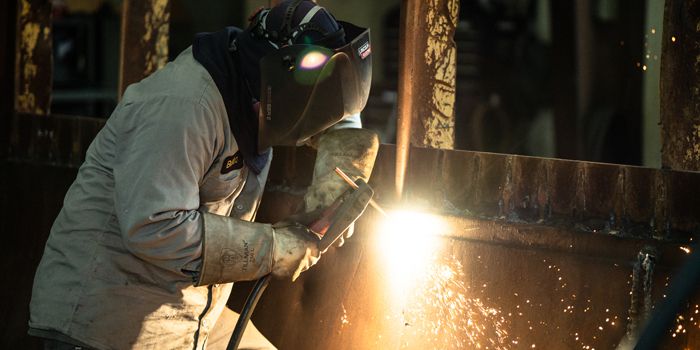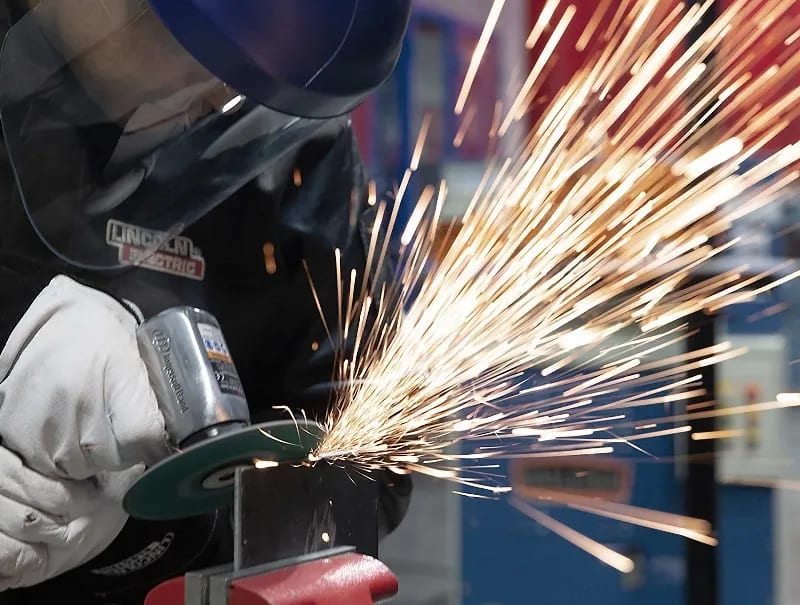All Concerning Welding: Trick Insights Into Techniques and Ideal Practices for Success
Welding encompasses a selection of methods, each fit for specific materials and applications. Understanding these approaches, such as GMAW, SMAW, and TIG, is important for attaining suitable results. The right equipment and safety and security techniques can not be neglected. As preparation and repairing play essential duties in the welding process, mastering these elements can substantially boost the high quality of the end product. What are the essential factors that assure a successful weld?
Understanding Various Welding Strategies
Welding strategies include a range of approaches, each matched to specific applications and materials. Among the most typical methods are Gas Metal Arc Welding (GMAW), Shielded Steel Arc Welding (SMAW), and Tungsten Inert Gas Welding (TIG) GMAW, likewise recognized as MIG welding, is preferred for its speed and versatility, making it optimal for slim products. SMAW, or stick welding, is favored for its simpleness and efficiency in outside settings, especially with thicker metals. TIG welding offers precision and control, making it appropriate for elaborate job and non-ferrous metals (Montana Mobile Welding and Repair Belgrade Fabrication). Each technique has its distinct advantages and factors to consider, enabling welders to pick the best approach based on the job's requirements, material type, and wanted results. Comprehending these techniques is essential for successful welding
Essential Welding Equipment and Tools
While numerous welding strategies need details abilities, the right devices and tools are similarly important for accomplishing top quality outcomes. Crucial welding tools includes welding machines, which vary depending upon the method-- such as MIG, TIG, or stick welding. Safety equipment, consisting of headgears, aprons, and gloves, warranties safety and security and convenience during the process. Additionally, clamps and fixtures assist protect materials in area, guaranteeing accuracy in welds. Consumables like welding poles, cable, and securing gas are likewise crucial elements that influence the quality of the weld. Tools such as mills and cutters assist in surface prep work and post-weld ending up, contributing to a professional end result. Purchasing top notch equipment eventually boosts the performance and performance of welding jobs.
Security Practices in Welding
Proper safety and security practices are crucial in the welding sector to shield workers from prospective hazards. Welders should use suitable individual protective equipment (PPE), including helmets with proper shading, handwear covers, and flame-resistant garments. Adequate air flow is important to lower exposure to damaging fumes and gases produced during the welding procedure. Additionally, workers need to be trained in the correct handling of welding equipment to avoid mishaps. Fire precaution, such as maintaining flammable materials far from the welding area and having fire extinguishers conveniently available, are essential. Regular inspections of devices and work spaces can help recognize potential dangers prior to they cause accidents. By sticking to these safety practices, welders can create a more secure working setting and lessen threats associated with their trade.
Preparing Products for Welding
Preparing products for welding is an important action that significantly influences the quality and honesty of the end product (Montana Mobile Welding and Repair Welding). Correct prep work involves cleansing the surfaces to remove contaminants such as rust, oil, and dust, which can compromise the weld. Methods such as grinding, sanding, or using solvents are typically utilized to accomplish a clean surface. Furthermore, making sure that the products mesh snugly is crucial; gaps can result in weak welds. It's likewise crucial to take right into account the placement and positioning of the parts, as this will certainly influence the ease of welding and the last end result. Finally, choosing the proper filler material and making sure compatibility with the base steels is vital for attaining strong, resilient welds
Tips for Achieving High-Quality Welds
Achieving high-quality welds calls for interest to information and adherence to best practices throughout the welding process. Proper joint preparation is vital, making certain surface areas are cost-free and tidy from impurities. Choosing the proper filler product and welding technique based upon the base metals is crucial for optimal bonding. Preserving consistent travel rate and angle while welding can advertise and protect against defects uniformity. In addition, managing warmth input is crucial; extreme heat can lead to warping and compromised joints. Consistently checking the welds throughout the process enables instant adjustments if needed. Utilizing suitable post-weld treatments, such as cleaning and anxiety alleviation, can enhance the longevity and integrity of the weld, ultimately ensuring an effective end result.
Fixing Usual Welding Issues
Welding usually offers obstacles that can impact the quality and integrity of the end product. Typical problems such as porosity, irregular weld beads, and getting too hot can emerge, each requiring details fixing methods. Recognizing these issues is essential for welders to boost their abilities and attain excellent results.
Porosity Troubles Discussed
Porosity can usually be forgotten, it remains a critical problem in welding that can endanger the honesty of a finished item. Porosity describes the existence of tiny gas pockets within the weld bead, which can lead and compromise the joint to premature failure. This trouble normally emerges from impurities, moisture, or improper protecting gas insurance coverage during the welding process. To reduce porosity, welders should verify that the base products are completely dry and tidy, make use of proper shielding gases, and maintain regular welding criteria. On a regular basis inspecting the equipment and environment can also help identify prospective click here for more info concerns prior to they materialize in the weld. Attending to porosity effectively is vital for accomplishing solid, resilient welds that meet quality criteria.

Inconsistent Weld Beans
Irregular weld beads can considerably impact the quality and strength of an ended up product. Various aspects contribute to this problem, including inappropriate traveling speed, wrong amperage setups, and inconsistent electrode angles. When the welder moves also swiftly, a grain may appear narrow and lack infiltration, while relocating as well slowly can create too much build-up. Furthermore, making use of the wrong amperage can lead to either damaging or extreme spatter, both of which concession weld stability. The welder's strategy, such as inconsistent lantern movement, can also cause irregular bead appearance. To reduce these problems, welders ought to concentrate on keeping constant, controlled motions and ensuring proper devices settings to accomplish uniformity in their welds. Uniformity is vital to achieving solid and reputable welds.
Overheating and Bending Issues
Too much warm throughout the welding process can result in considerable overheating and deforming concerns, affecting the structural integrity of the workpiece. These troubles often manifest as distortion, which can compromise alignment and fit-up, making more assembly testing. Elements contributing to overheating include the choice of welding parameters, such as voltage and travel rate, along with the kind of material being bonded. To alleviate these issues, welders must preserve constant travel rate and appropriate warm input while monitoring the workpiece temperature level. In addition, preheating or post-weld warmth treatment can assist reduce tensions brought on by fast air conditioning - Belgrade. Normal assessment and adherence to finest practices are important in stopping overheating and making sure the durability and integrity of welded structures
Frequently Asked Questions
What Are the Profession Opportunities in the Welding Sector?
The welding sector uses diverse career chances, including positions as welders, educators, engineers, and assessors. Experts can work in production, construction, aerospace, and auto sectors, profiting from strong need and competitive wages in various roles.
Exactly How Can I Improve My Welding Speed Without Giving Up High Quality?
To improve welding rate without giving up high quality, one need to exercise reliable methods, keep tools, optimize settings, and boost hand-eye sychronisation. Normal training and seeking responses can also significantly add to achieving much faster, top notch welds.
What Certifications Are Available for Welders?
Countless accreditations exist for welders, consisting of those from the American Welding Culture (AWS), my blog the National Facility for Construction Education and Study (NCCER), and numerous industry-specific companies. These qualifications boost employability and show ability effectiveness.
How Does Welding Impact the Characteristics of Metals?
Welding influences the properties of metals by altering their microstructure, which can lead to changes in hardness, ductility, and stamina. Heat input and cooling prices throughout the process significantly impact these over here product characteristics.
Can I Weld Dissimilar Metals Together?
